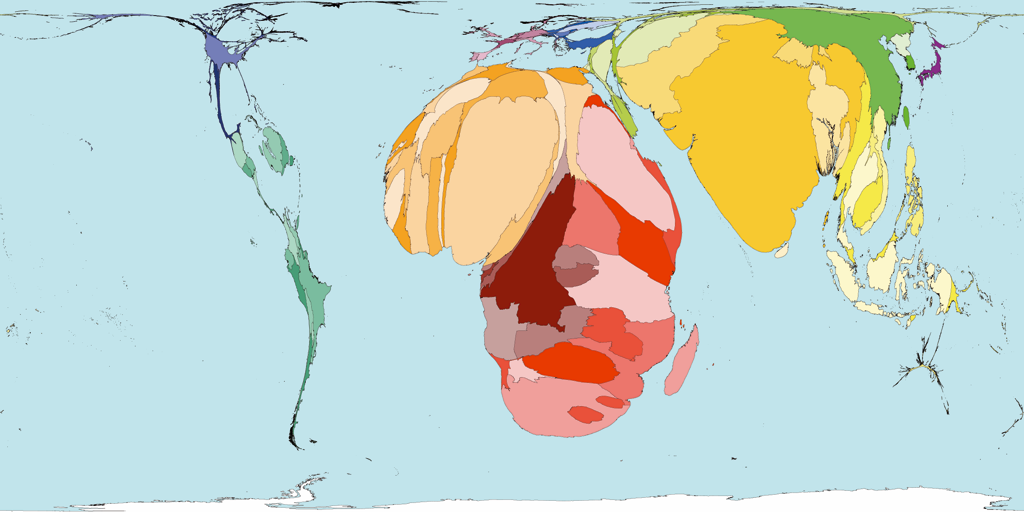Image from WorldMapper: The world as you’ve never seen it before
This map shows the size of the country in proportion to the absolute number of people that died from infectious and parasitic diseases in one year. Australia, Europe and America are barely visible due to good sanitation practices, education and high quality health care, including vaccination programs. Africa and India are disproportionately large due to HIV/AIDS (27% of total deaths); diarrhoeal diseases (17%); tuberculosis (14%); malaria (8%); measles (6%) and whooping cough (3%).
Infectious diseases have had significant impacts on population numbers, politics and society throughout history, from the Athens epidemic (430-427BC) that killed up to half the population of ancient Athens, waves of plague (‘Black death’) that killed up to 90% of Europeans in the 12th century and smallpox that ravaged populations as the Spanish and Portuguese conquistadors invaded the Americas. (“Early History of Infectious Disease” by Nelson and Williams)
More recently, vaccination programs have been very successful in eradicating smallpox and dramatically reducing the numbers of cases of polio, measles/rubella and tetanus. However, diseases such as HIV/AIDS, various influenza strains and Ebola are still causing many deaths throughout the world. The pathogens that cause these diseases are very good at evading the immune system, making it difficult for the immune system to recognise or remember them.
